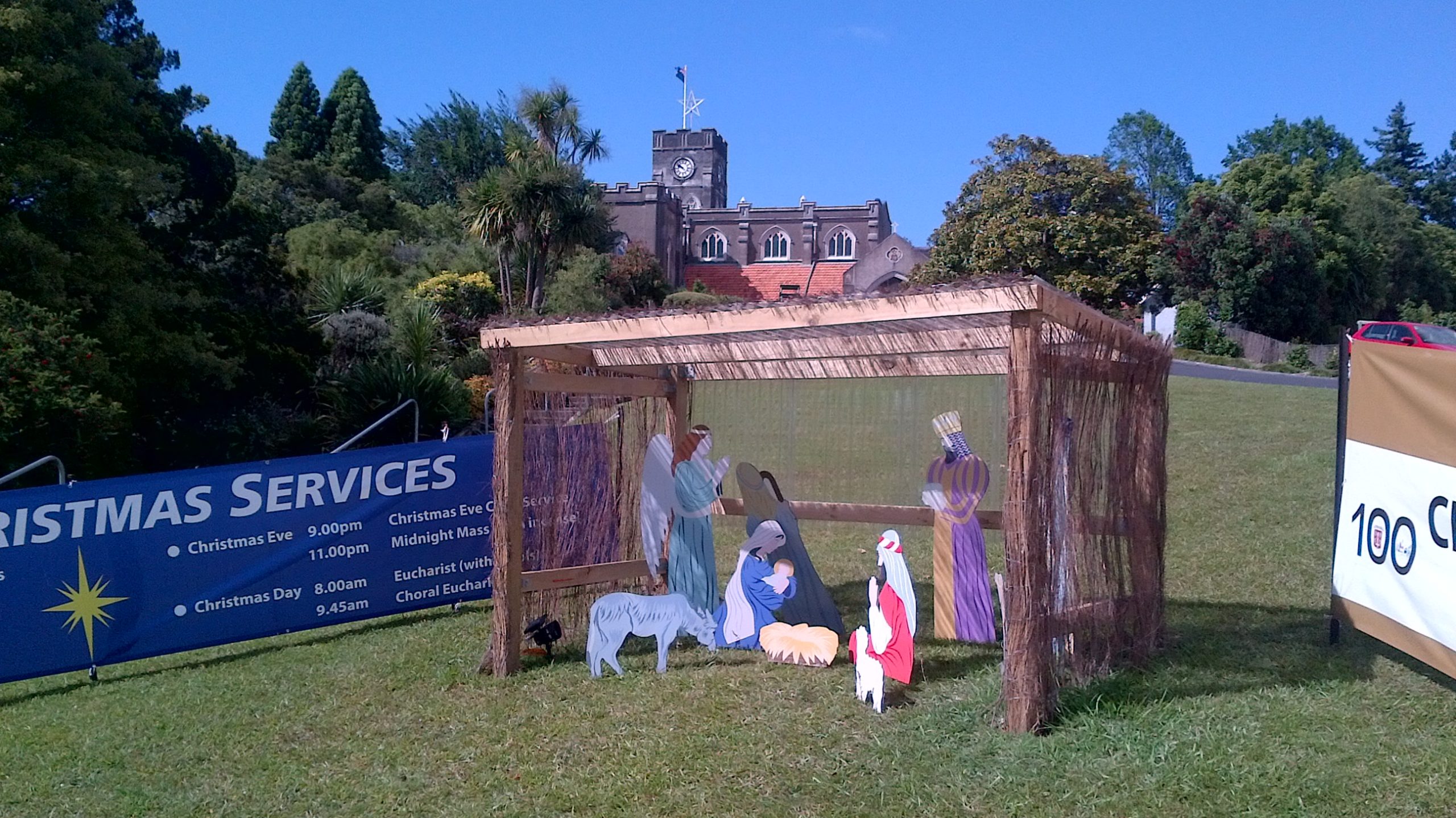by Michael Burslem
It was my good fortune to be in another Hamilton for the centenary celebrations for the Waikato Cathedral Church of St. Peter.
Erected as the parish church in 1916, it became a cathedral in 1926 when the joint dioceses of Waikato and Taranaki were carved out of Auckland Diocese.
Built during WWI, when apparently there was a shortage of bricks in New Zealand, it was constructed of concrete. This has held it in good stead through subsequent earthquakes. Tremors were felt in Hamilton during the November 14th major earthquake in Kaikoura. There are frequent warnings about what to do in the event of one.

The church was built on top of a hill named Pukerangiora, overlooking the Waikato River, a sacred site used by Maoris for worship for centuries. One is aware that New Zealanders have inherited Maori land, by the very fact that large parts of the service are in Maori. Only in the Arctic have I heard an indigenous language in our services, there Inuktitut. I think it in order, if only to remind us we’ve also inherited someone else’s land and to do penance for the residential schools. It might induce indigenous peoples to join us in worship.
The church has a peal of eight bells, rung before the service as in any English parish church or cathedral. How come they’re not so popular in Canada, where perhaps there are more immigrants from the old country? I’ve heard only two peals, at the cathedrals of Quebec City and Toronto. There’s a knack to ringing them, as I learned as a teenager before emigrating to Canada 65 years ago. I never kept it up. My brother, who used to be a tower captain here, was ringing that morning.
A bevy of bishops and assorted clergy attended. Dean Peter Rickman introduced everybody, Bishop Helen-Ann Hartley of Waikato conducted the service and New Zealand’s Primate Archbishop Philip Richardson of Taranaki preached on the challenge to be a follower of Jesus Christ today.
The service, set to Gounod’s Misse Brève in Latin—a magnificent work fitting for the occasion—was beautifully performed. Dame Malvina Major, New Zealand’s prima donna, sang Mozart’s Laudate Dominum during the communion. It was to God’s praise indeed.
One strange thing occurred. A bishop’s crozier, which nobody knew about, was recently found in a cupboard. It was filthy dirty. When cleaned, a Latin inscription dated 1922 stated it belonged to the bishop of Auckland. It was given back to Auckland’s bishop, who was with us, and he re-presented it to Bishop Hartley. It was presumed to have been in the cupboard since 1922, before the church was a cathedral.
Hanging across the aisle was a magnificent banner, a new work of the cathedral youth, that read, Unto us a child is born. A tapestry, made by LOFT (Ladies of the Order of Fine Things), with the word Welcome was also displayed. Both, blessed by Archbishop Richardson, showed their extraordinary skills in producing such beautiful works of art. Our churches are not devoid of “fine things,” but how many are created within the parish?
It was a truly momentous service, with many children present. The Dean told them he read recently that the first generation who’ll live to be 200 was alive today, so they could possibly be present for the 200th anniversary.
I know I won’t be, but I’m more than grateful to God for attending the first centenary.
Michael Burslem is a member of St. George’s Guelph.


Euchre and the Meaning of Life